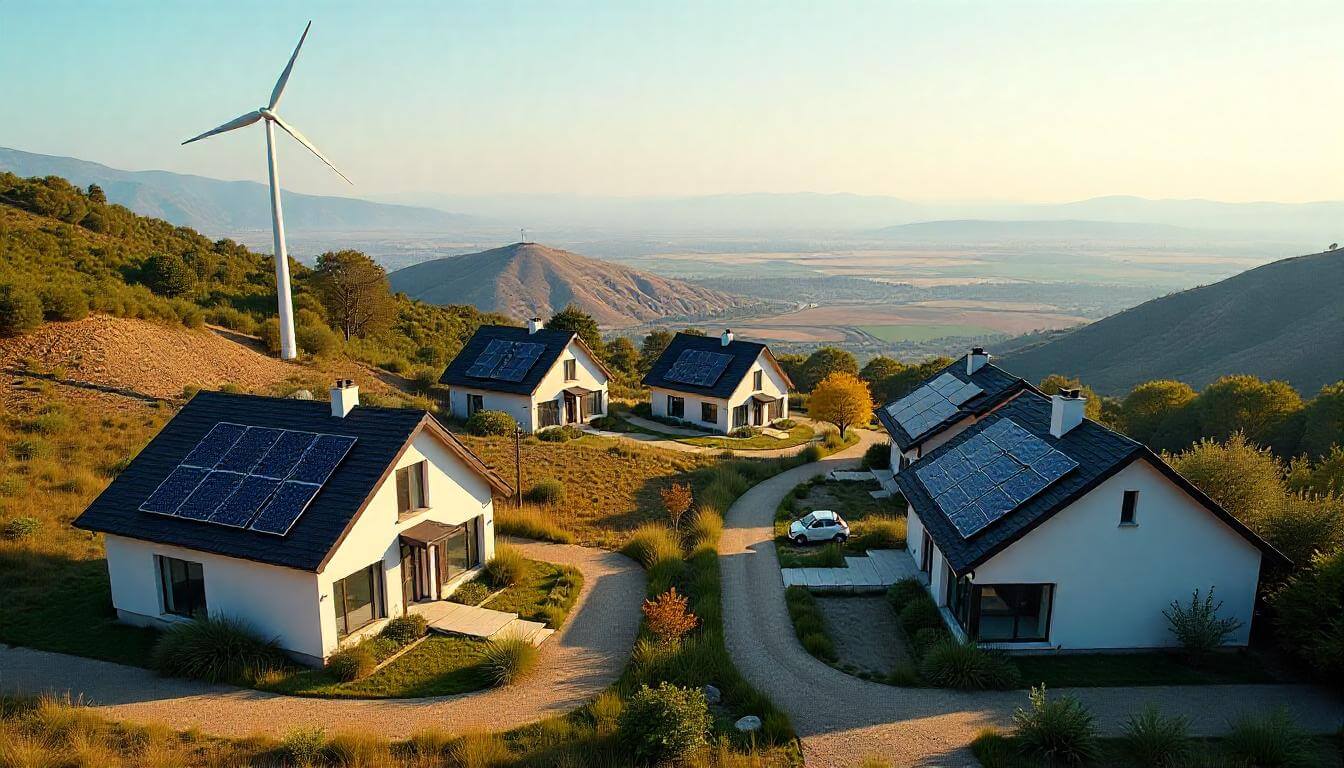The global imperative to transition away from fossil fuels and embrace clean energy sources has driven unprecedented innovation and investment in the renewable sector. While large-scale solar farms and wind turbine arrays capture headlines, equally transformative work is being done by dedicated investment vehicles. A standout example is the $90M Renewable Energy Fund that has achieved a monumental milestone: powering one million homes worldwide. This substantial capital injection has not merely funded projects; it has ignited a movement, demonstrating how strategic financial backing can profoundly impact energy access, foster sustainable development, and fundamentally reshape the global energy landscape. This article delves into a major financial transaction (over $50 million) that has truly energized communities across the globe.
The Global Energy Challenge: Access and Sustainability
For billions across the globe, reliable and affordable electricity remains an elusive dream. Vast populations, particularly in developing economies, lack consistent grid access, relying on expensive, polluting, or dangerous alternatives like kerosene and diesel generators. Simultaneously, the urgency of climate change demands a rapid shift from carbon-intensive energy production. These twin challenges—energy access and environmental sustainability—underscore the critical need for scalable, impactful renewable energy solutions. Addressing these issues requires more than just technological breakthroughs; it demands significant, targeted financial commitment to deploy these technologies where they are needed most.
The intersection of these challenges presents both a profound responsibility and an immense opportunity. It calls for investment strategies that can not only generate clean power but also ensure its equitable distribution, thereby transforming lives and fostering economic growth in communities previously left in the dark.
The Rise of Impact Investing in Renewable Energy
Traditional energy investments have historically focused on large, centralized power plants, often fossil-fuel-based. However, the renewable energy sector has increasingly attracted “impact investors”—funds and individuals seeking not only financial returns but also measurable social and environmental benefits. A renewable energy fund exemplifies this shift, prioritizing projects that align with sustainable development goals, such as universal energy access and climate action. These funds often target distributed energy solutions, including solar home systems and mini-grids, which are particularly effective in reaching remote or underserved populations without extending costly national grids.
This approach recognizes that small-scale, decentralized renewable systems can empower communities directly. They reduce reliance on unstable grid infrastructure or polluting energy sources. This evolution in investment philosophy is crucial for unlocking the full potential of clean energy to address global inequalities and environmental degradation.
TerraVolt Fund: The $90 Million Catalyst
At the heart of this success story is the “TerraVolt Fund,” a pioneering investment vehicle that raised its $90M Renewable Energy Fund with a clear mandate: to accelerate energy access and reduce carbon footprints globally. Launched by a consortium of philanthropic organizations, institutional investors, and development finance institutions, the fund strategically deployed its capital across a diverse portfolio of projects in various geographies, focusing primarily on emerging markets with significant energy deficits.
The fund’s strategy involved a blended finance approach, combining concessional capital with commercial investments to de-risk projects and attract private sector participation. This multi-faceted funding model proved instrumental in mobilizing additional capital beyond the initial $90 million, significantly amplifying its reach and impact. TerraVolt Fund’s meticulous due diligence and focus on measurable outcomes ensured that every dollar invested contributed directly to sustainable energy deployment.
Powering 1 Million Homes: A Multifaceted Strategy
Achieving the ambitious goal of powering one million homes required a multifaceted and adaptable investment strategy. The TerraVolt Fund did not simply pour money into single, monolithic projects; instead, it supported a diverse range of renewable energy solutions tailored to specific regional needs:
- Distributed Solar Home Systems (SHS): A significant portion of the $90M was allocated to companies developing and distributing affordable solar home systems, particularly in off-grid rural areas. These systems typically include solar panels, batteries for storage, and efficient DC appliances. They provide immediate electricity access for lighting, mobile charging, and small electronics, directly replacing hazardous kerosene lamps and diesel generators.
- Mini-Grids: The fund invested in the construction and expansion of mini-grids—localized electricity grids powered by renewable sources (solar, hydro, or wind) that serve small communities or clusters of households and businesses. These systems provide higher levels of power suitable for productive uses, such as irrigation pumps, refrigeration, and small businesses, fostering local economic development.
- Utility-Scale Projects with Residential Offtake: While focused on direct residential impact, some investments were made in larger utility-scale solar and wind farms. A key condition for these investments was guaranteed “offtake agreements” with local utilities or energy retailers. This ensured that a measurable portion of the clean electricity generated would directly contribute to the supply for residential customers within the grid.
- Enabling Technologies & Infrastructure: The fund also invested in enabling technologies, such as smart metering systems, pay-as-you-go platforms, and advanced energy management software. These innovations improved the affordability, accessibility, and operational efficiency of the deployed renewable energy solutions, making clean energy a viable option for low-income households.
By diversifying its investments across these models, the TerraVolt Fund maximized its reach and ensured that the $90M had a widespread, transformative impact on residential energy access.
Environmental Impact: Drastically Cutting Carbon Emissions
The most direct environmental benefit of this $90M Renewable Energy Fund is the substantial reduction in greenhouse gas emissions. By displacing fossil fuel-based lighting and power generation (e.g., kerosene, diesel generators, grid electricity from coal/gas plants), the fund’s projects prevent millions of tons of CO2 from entering the atmosphere annually. The shift to clean energy directly mitigates climate change.
Moreover, these projects contribute to improved local air quality, reducing respiratory illnesses associated with indoor air pollution from burning fuels. They also minimize the environmental risks associated with fossil fuel extraction, transport, and waste disposal. Each home powered by renewable energy represents a step away from a carbon-intensive past and towards a cleaner, healthier future for the planet.
Socio-Economic Transformation: Beyond Kilowatt-Hours
The impact of the TerraVolt Fund’s investment extends far beyond environmental metrics; it has catalyzed profound socio-economic transformations in the communities it serves. With reliable electricity, homes enjoy extended hours for studying and productive activities, improving educational outcomes and household incomes. Small businesses can operate longer, use electric tools, and integrate digital services, leading to job creation and economic growth.
The convenience and safety of electric lighting replace dangerous and costly kerosene lamps, significantly reducing fire hazards and improving household health. Furthermore, access to charging points for mobile phones and other devices connects communities to the digital world, fostering communication, commerce, and access to information. The $90M renewable energy fund thus became an investment in human development, empowering individuals and strengthening community resilience.
Strategic Partnerships and Sustainable Models
A critical factor in the TerraVolt Fund’s success was its emphasis on strategic partnerships and the development of sustainable business models. The fund collaborated closely with local energy developers, community organizations, and government agencies. This ensured that projects were culturally appropriate, met local needs, and had the necessary regulatory support for long-term viability.
Furthermore, the fund championed innovative financing mechanisms, such as results-based financing and “pay-as-you-go” models. These approaches made solar home systems and mini-grid connections affordable for low-income households, allowing them to pay for electricity services in small, manageable installments. This not only ensured financial sustainability for the projects but also fostered local ownership and continued service delivery, solidifying the long-term impact of the $90M investment.
Overcoming Challenges: A Blueprint for Future Funds
Powering one million homes with renewable energy was not without its challenges. The TerraVolt Fund navigated complex regulatory environments, varying local infrastructure needs, and the inherent risks of operating in emerging markets. Issues such as supply chain logistics, attracting skilled local talent, and ensuring ongoing maintenance of distributed systems required adaptable solutions and robust operational frameworks.
The fund’s experience offers a valuable blueprint for future renewable energy fund initiatives. It highlights the importance of patient capital, flexible investment strategies, and a deep understanding of local contexts. The success demonstrates that with strategic vision and adequate funding, scaling renewable energy access to a massive scale is achievable, providing a tangible model for addressing global energy poverty and climate goals simultaneously.
Conclusion: A Legacy of Light and Sustainability
The $90M Renewable Energy Fund managed by TerraVolt Fund stands as a powerful testament to the transformative potential of targeted investment in clean energy. By strategically deploying capital across diverse renewable projects, it has brought reliable, sustainable power to one million homes, drastically reducing carbon emissions, fostering economic development, and improving countless lives. This significant financial transaction serves as a beacon, illustrating how impact-driven finance can unlock unprecedented progress in the fight against climate change and the pursuit of universal energy access. It is a legacy of light, powering not just homes, but a brighter, more sustainable future for communities across the globe.



Komentarze